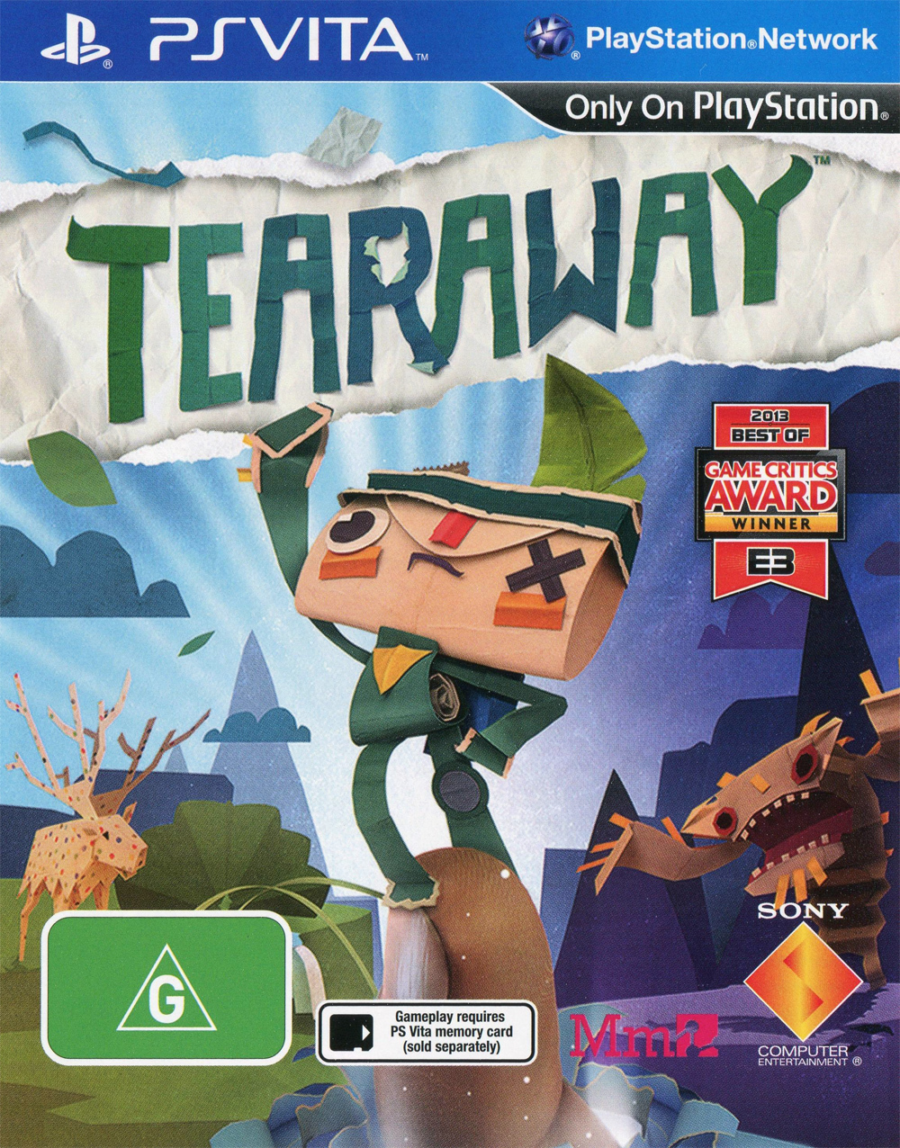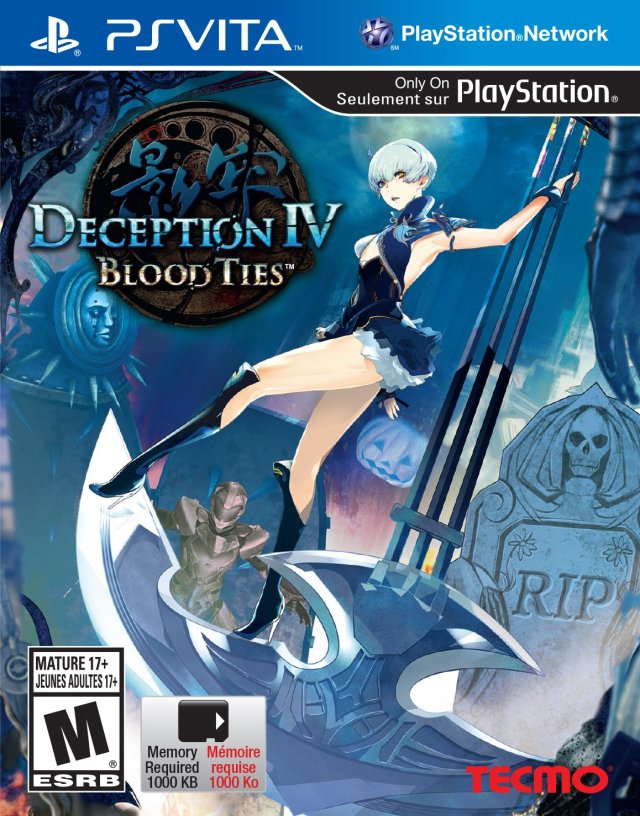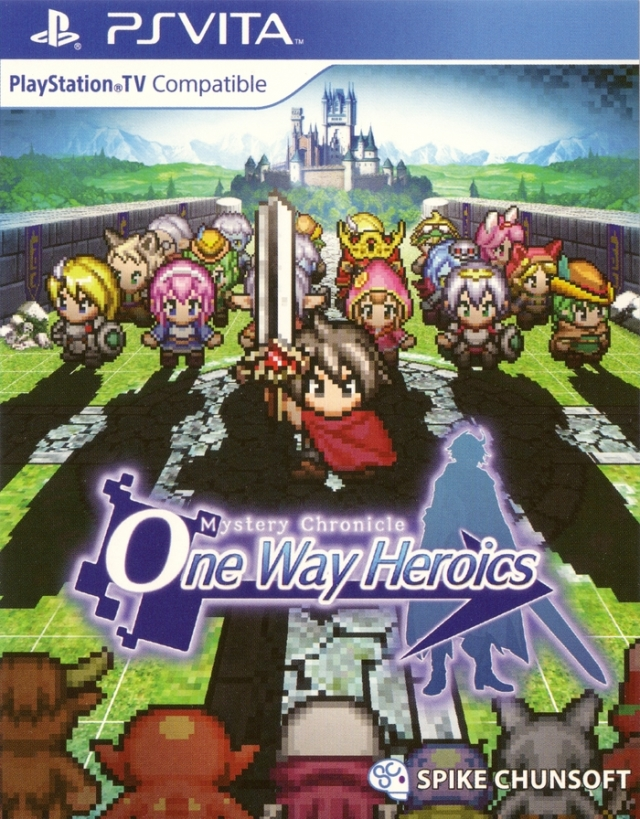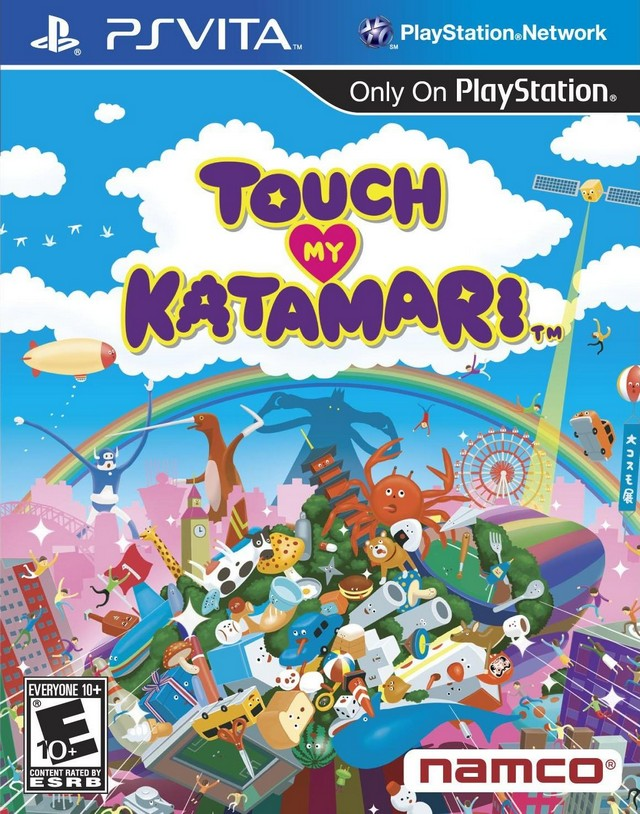Most unique PS vita games
7. Tearaway

Tearaway may be the poster boy of a very unique game. Just like in the Nintendo consoles, 3DS/DS and Wii/WiiU, there are experiences that will never be replicated again because the games are made around an exotic platform. Tearaway got ported over at the PlayStation 4, but it does not have that Vita magic.
Tearaway’s gameplay is a mix of 3D platforming and puzzle-solving, where players must guide Iota through various lands, each filled with colorful paper creatures and obstacles. The game’s unique interaction mechanics allow players to manipulate the environment by tapping, pulling, and pushing on the Vita’s touchscreens. As players help Iota navigate through these challenges, they encounter enemies called Scraps, which can be easily vanquished by making them miss attacks and then tossing them away. The game encourages exploration, with hidden presents, confetti, and characters needing assistance scattered throughout.
Customization plays a significant role in Tearaway, with players able to modify Iota’s appearance and solve puzzles by adding embellishments. The in-game camera feature lets players capture colorful objects to restore vibrancy to the world, and even bring real-world photos into the game. Tearaway’s enchanting papercraft world and interactive elements offer a delightful experience that evokes a child-like sense of wonder, making it a memorable addition to the PS Vita’s library.
6. Frobisher Says!

Titles based on minigames at one point in video game history gained immense popularity, with games like Bishi Bashi and WarioWare capturing players’ attention with their fast-paced, seemingly nonsensical challenges. Honeyslug’s Frobisher Says! leveraged the handheld console’s unique hardware capabilities. The game features a series of surreal mini-games that test reflexes and intuition, requiring players to follow Frobisher’s bizarre commands. Despite lacking a traditional tutorial, the game provides brief instructions before each challenge.
Frobisher Says! offers two main gameplay modes: one focused on achieving high scores by completing mini-games quickly and accurately, and a survival mode where the objective is to perform tasks correctly regardless of speed. Both modes support multiplayer gameplay, allowing up to eight players to pass the console around, although there is no online or Ad-Hoc multiplayer option, which looking back is a great decision due to the inevitable demise of an online infrastructure.
The game’s vibrant and absurd visual style, combined with the innovative use of the Vita’s features, like the Sixaxis, cameras, microphone, and touchpads, creates a diverse and engaging experience. Players interact with the game world in various ways, from scratching Frobisher’s back using the rear touchpad to smiling at the front camera for facial recognition mini-games.
Frobisher Says! is a blast not only for its creative mini-games but also for its exceptional audio and voice acting, which perfectly complement the quirky character of Frobisher. It is a delightful showcase of the PS Vita’s capabilities, offering hours of entertainment for fans of inventive and unconventional gaming.
5. Reality Fighters

Since its success with Invizimals, Novarama is eager to continue innovating, as evidenced by their PS Vita title Reality Fighters. This fighting game stands out due to its unique approach: players create their own fighters using face detection technology, allowing their in-game characters to resemble themselves, friends, or even celebrities. This feature, combined with extensive customization options, makes the game original and entertaining.
Reality Fighters offers a robust character editor, where players can adjust their fighter’s physique, attire, and accessories, affecting both appearance and performance. With over 400 equipable items and 15 different fighting styles, the game emphasizes creativity and personalization. Players can also add voice comments to their fighters, enhancing the immersive experience.
This unique fighting game includes various modes such as Story, Training, Quick Fight, Time Trial, and Survival, offering a range of challenges. While the graphics and combat mechanics may not be cutting-edge, the fluidity and integration of augmented reality elements are commendable. Reality Fighters is a fresh and original addition to the fighting genre.
4. Deception IV: Blood Ties

Deception IV: Blood Ties centers around a protagonist who might be an ordinary woman, witch, or she-devil. The plot is somewhat ambiguous, involving interactions with witches or demons and luring enemies to their deaths. The protagonist’s mission possibly revolves around the Holy Verses, either seeking them or preventing others from obtaining them.
The real attraction of Deception IV lies in its inventive and gruesome trap-based gameplay. Players are more focused on creating elaborate and deadly traps to kill enemies in creative ways rather than following the story. The cutscenes and plot development take a back seat as players rush to set up and execute traps. The gameplay’s focus on setting up Rube Goldberg-like machines of death provides a thrilling and engaging experience, similar to the destructive joy found in games like Earth Defense Force.
For those who enjoy plotting intricate death sequences, Deception IV offers endless entertainment. The game involves luring enemies into traps, running around to avoid attacks, and resetting traps to continue the cycle of mayhem. Those who relish in the strategic and brutal elimination of foes will find Deception IV highly satisfying. They may be in need of psychiatric help too.
3. Mystery Chronicle: One Way Heroics

Mystery Chronicle: One Way Heroics combines the rogue-like nature of the Mystery Dungeon series with a world being destroyed with every step, creating a surprisingly deep and engaging experience. The game allows exploration not only laterally but also within a 30-pace north-south range, presenting various biomes and regions with environmental hazards and enemies. The world is filled with towns and dungeons that offer gear and save points, enhancing the player’s chances of survival against the encroaching evil known as the Shine Raid.
Players start each adventure at level 1 but can use Genesis Stones earned from each run to unlock new classes, perks, and expand the starting castle with NPCs and merchants. The Dream Vault allows players to save a limited number of items for future runs, adding a strategic element to resource management. The game’s weapon durability mechanic requires careful planning and frequent visits to blacksmiths to keep equipment in good condition, adding tension and excitement to each run.
Mystery Chronicle’s shorter runs make it ideal for quick gaming sessions, especially on the PlayStation Vita. The game’s diverse classes cater to different playstyles, providing significant replay value. Despite its simple pixel art graphics, the game offers a nostalgic charm that works well on the Vita. Mystery Chronicle: One Way Heroics is a standout title that revitalizes the roguelike genre and remains a favorite for quick, engaging gameplay sessions.
2. Oreshika: Tainted Bloodlines

Oreshika: Tainted Bloodlines is an incredibly unique RPG with a dramatic premise: a clan cursed with a relentless drive for vengeance. The game starts with a captivating scene of a clan mourning their losses, demons wreaking havoc, and gods observing from their celestial realms. As the head of this clan, players are tasked with recovering the Five Instruments, treasures stolen by demons. After failing to protect these treasures, the emperor punishes the clan with death. However, a sympathetic god and a woman named Nueko revive the clan, albeit with two curses: a lifespan limited to two years and an inability to procreate with other humans. This sets the stage for a journey of redemption and revenge.
Gameplay in Oreshika is rich in depth and complexity, reminiscent of classic JRPGs. Players must meticulously plan their ventures and strategies each month, deciding where to explore, what goals to pursue, and how to allocate resources. Combat is engaging and strategic, featuring a variety of classes and skills that pass down through generations. The game introduces a unique twist: if the leader of a party falls, the entire party is defeated, adding a layer of tactical decision-making. This system ensures that battles are challenging and require careful planning, rather than mere button-mashing.
Oreshika also emphasizes the importance of lineage and legacy. With clan members’ lifespans limited to two years, players must engage in the Divine Union with gods to produce the next generation of warriors. This breeding system is intricate, with traits, skills, and classes passing down through bloodlines. The emotional impact of losing clan members and seeing their legacy continue through their descendants is profound. The game’s aesthetic, inspired by ancient Japanese art, is awe-inspiring. Oreshika: Tainted Bloodlines stands out as a deeply engaging JRPG, blending traditional mechanics with innovative storytelling and gameplay elements.
1. Touch My Katamari

Touch My Katamari is an excellent reimagining of the beloved Katamari series, combining the familiar gameplay with new challenges and mechanics. While previous games in the series like We Love Katamari and Me and My Katamari have their own charm, Touch My Katamari stands out with an innovative approach. Which is a crazy achievement to begin with given the franchise is known for being its out-of-whack creative flamboyance.
The gameplay in Touch My Katamari remains true to the series’ core concept of rolling up objects to grow larger, but introduces new strategic elements due to fewer items to pick up. This added difficulty requires players to carefully consider what they can roll up, rather than mindlessly collecting everything in sight. The ability to stretch the Katamari ball to reach more items or move faster adds a new layer of strategy, enhancing the gameplay experience. The game includes 12 diverse stages, each with unique environments and special challenges, such as the Cowbear stage, where players must navigate around cow and bear-themed items to succeed.
Touch My Katamari excels in its replay value, offering multiple modes like Drive and Eternal, which provide endless opportunities for players to refine their skills and explore the levels further. The game’s sound effects and soundtrack are exceptional, with original songs that rival the classics. The graphics maintain the intentionally blocky style of the console Katamari games, looking great on the Vita. With a variety of collectibles, modes, and the potential for downloadable content, Touch My Katamari provides a rich and engaging experience for both longtime fans and newcomers to the series.
